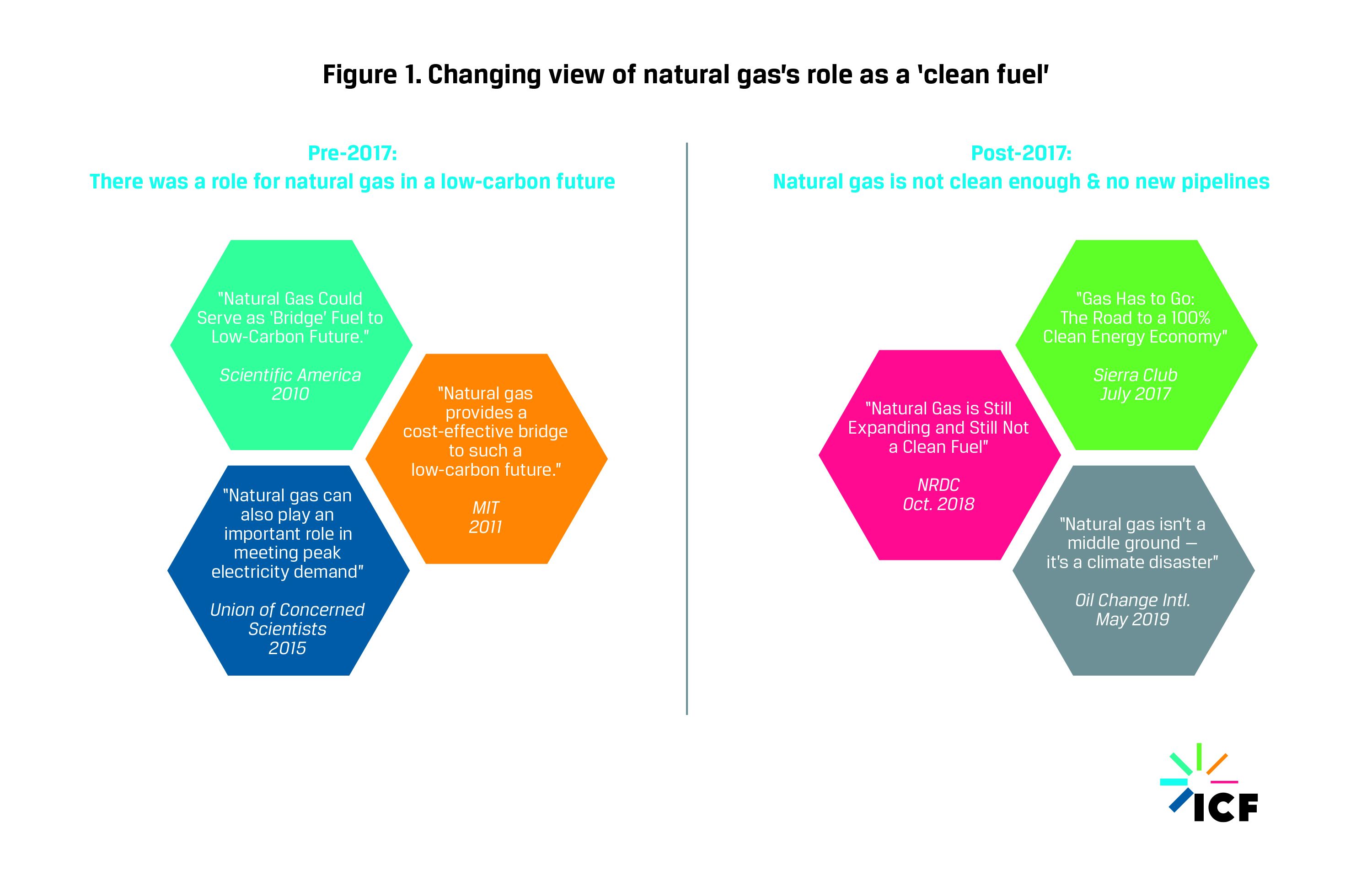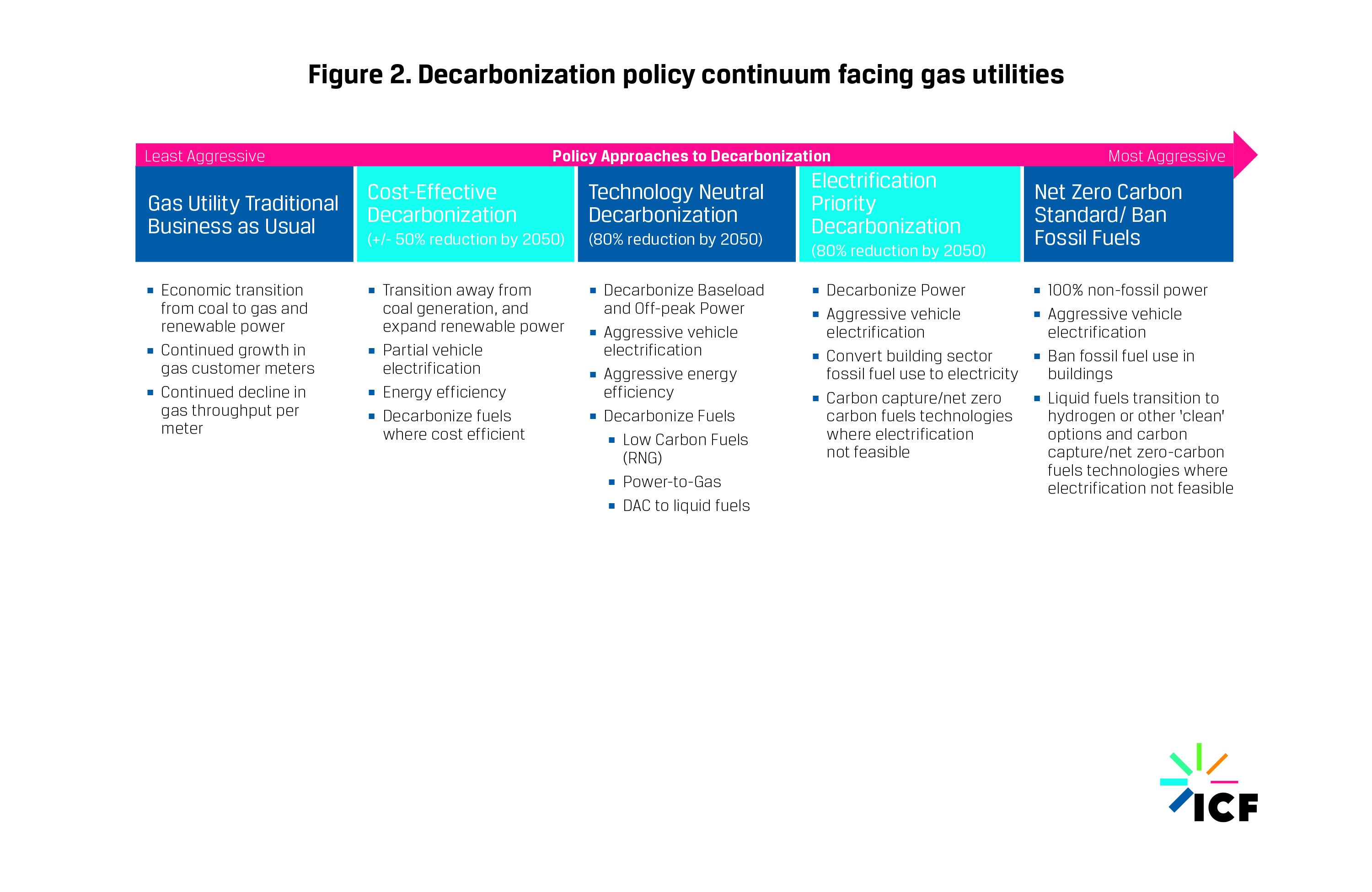
Gas utilities face growing risks from a patchwork of local climate change policies
Berkeley’s natural gas ban: A red herring or a sign of changing times?
Berkeley, California announced an ordinance requiring that all new multi-family construction starting January 2020 be built all electric in order to combat climate change. This ordinance effectively bans the use of natural gas in almost all new multi-family apartments. Other cities in California, including San Louis Obispo and San Jose have followed suit and close to 50 communities in the state are considering similar ordinances.
Is this the start of a trend towards deep decarbonization policies at the local level?
Many of the stakeholders in the climate change discussion want to see a reduced role for natural gas in the future, and are promoting aggressive emission reduction policies that will limit the future use of natural gas. In California, even the utilities have had mixed reactions to the community proposals. PG&E has supported these ordinances, and has promoted some programs to convert natural gas load to electricity, while SoCalGas has raised concerns over potential cost increases to consumers due to these types of proposals.
Berkeley’s ban is one of many signs that, without federal climate change policy, decarbonization policies will be determined at the local and state level. The Net Zero Carbon Building Declaration that organizations like C40 Cities are pursuing suggests that these policies are likely to spread beyond California. These policies will likely take shape in building code standards that focus first on new building construction, rather than addressing fossil fuel usage in the existing building stock.

To counter these positions, gas utilities will need to show how they can provide reliable, cost-effective service customers want while playing a significant role reducing GHG emissions, and in helping communities meet their climate change objectives. Gas utilities will need to insert themselves into these conversations early to show their value in a decarbonizing world and to provide a counterweight to the electric utilities and other stakeholders that are promoting policies that move away from natural gas to decrease emissions in the next few years.
Figure 2 below shows a range of policy approaches that are being implemented and discussed at varying levels across the U.S., which serve to highlight the shift in views at the local level toward addressing energy and climate change policies in the absence of federal leadership on the topic.

Local approaches climate change policies can vary sharply
Many stakeholders are actively seeking out solutions and guidance. We see great potential in renewable natural gas, hybrid electric-gas systems, and other levers to reduce gas utility emissions cost-effectively, but these options are competing against alternative approaches that exclude natural gas entirely. Without direct engagement with policymakers and regulators at the local and state level, gas utilities are at risk of being left out of the policy process.
A patchwork of emission reduction goals established by local governments will have effects beyond individual utility service territories, increasing the complexity and challenges for natural gas and becoming a defining business risk going forward.
Examples of existing city and state emission reduction goals:
- New York City: Achieve a 40% emissions reduction by 2030 and an 80% reduction by 2050 from a 2005 baseline.
- Los Angeles, California: Reduce municipal GHG emissions 55% by 2025 and 65% by 2035 from 2008 baseline levels, and to reach carbon neutrality by 2045.
- San Jose, California: Through the Envision San José 2040 general plan, the city has committed to electrify 47% of all households by 2030, and to reduce emissions to 0.90 metric tons of CO2e per person per year by 2050.
- Washington D.C.: Achieve a 50% emission reductions by 2032 from a 2006 baseline and pledge to reach carbon neutrality by 2050.
- Boston, Massachusetts: Reach carbon neutrality by 2050, with interim targets of 25% emissions reduction by 2020 and a 50% reduction by 2030 from 2005 levels.
- Fairfax County, Virginia: Achieve a 40% emission reductions by 2030 and an 80% reduction by 2050 from a 2005 baseline.
- Montgomery County, Maryland: Achieve an 80% emission reductions by 2027 and reach carbon neutrality by 2035.
Various stakeholders are in active discussion of widespread building electrification to achieve deep emission reduction targets, Maine recently passed Legislative Document No. 1464 to support electrification through conservation programs. New Jersey’s draft energy master plan defines 100% clean energy by 2050 through total carbon-neutral electricity generation and maximum transition to electrification of the building sectors.
Next up: Zero energy buildings—an implied ban on new natural gas?
Environmental policy advocates have also started focusing on zero net energy (ZNE) or zero carbon emissions as long-term goals for energy codes in 2018. Zero-energy building standards refer to building and energy management strategies that produce as much energy (or more) as the property consumes, or having a net carbon-neutral footprint on an annual basis.
These types of policies are generally applied to new building codes. They push the builder to incorporate a distributed generation energy source on-site (typically rooftop solar panels), high-efficiency building materials and practices, and all-electric household appliances.
Widespread residential electrification tackles the immediate emissions from buildings in a sector. But, this is only a true emissions reduction strategy if a predominately-clean energy grid supplies the all-electric households. If the local supply of electricity doesn’t meet these standards, the vastly-increased demand for electricity could actually grow emissions—requiring fossil-fueled electric plants to operate longer and more intensely.
Nothing inherent in these policies bans the use of fossil fuel. But, the impact of tightening energy consumption or direct building emissions may have the unintended, or intended, consequence of limiting natural gas in new building construction.
What can gas utilities do?
Gas utility contributions to climate change policy need to be a collaborative effort between utilities, regulators, and the public. Given the highly charged nature of these policies and the direct consumer impact, proactivity in reaching out and offering educational information is the best immediate strategy for gas utilities.
Gas utilities can engage with regulators to evaluate a variety of policy approaches for reducing emissions, including:
- Deployment of pilot programs for gas-electric hybrid space heating systems to evaluate electric grid impacts, costs, and energy and emission reductions
- Focusing decarbonization policies through energy reduction measures, like deep energy building retrofits
- Increasing investments in high-efficiency natural gas appliances and technology partnerships
- Investments in bringing low-carbon fuels to market that can be delivered to consumers using existing natural gas pipeline systems, such as renewable natural gas and, over the long-term, hydrogen
- Discussions and educational outreach on the costs of these policies, particularly to low-income households that are least able to deal with large increases to annual energy costs
A proactive approach to reducing direct and indirect emissions can position gas utilities to be part of the decarbonization policy conversation. But, a business-as-usual approach increases the risk of policy decisions made without their input. Watch ICF’s recent webinar, “The Role of Natural Gas Utilities in a Decarbonizing World,” to learn more and hear how New Jersey Resources and other gas utilities are handling these debates.
